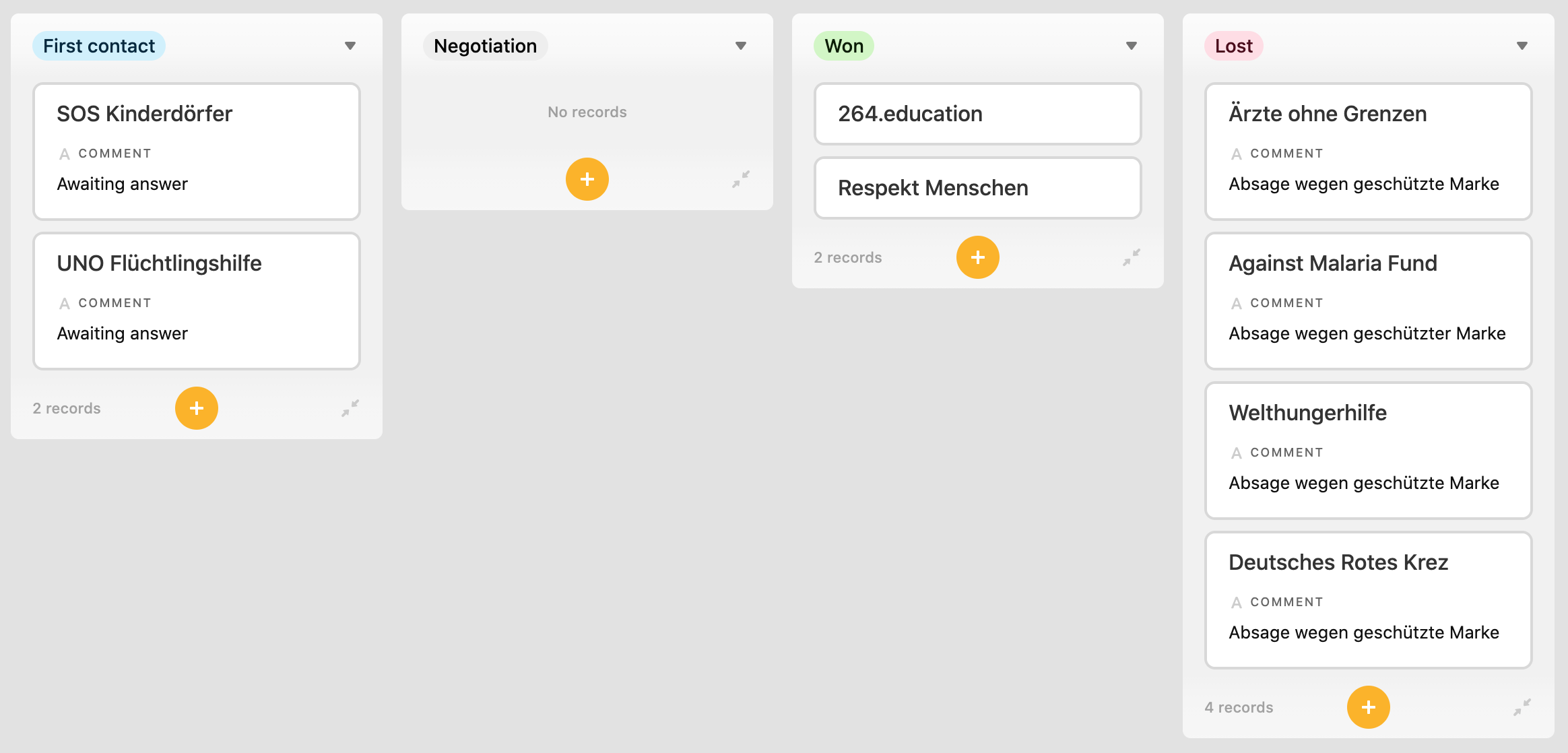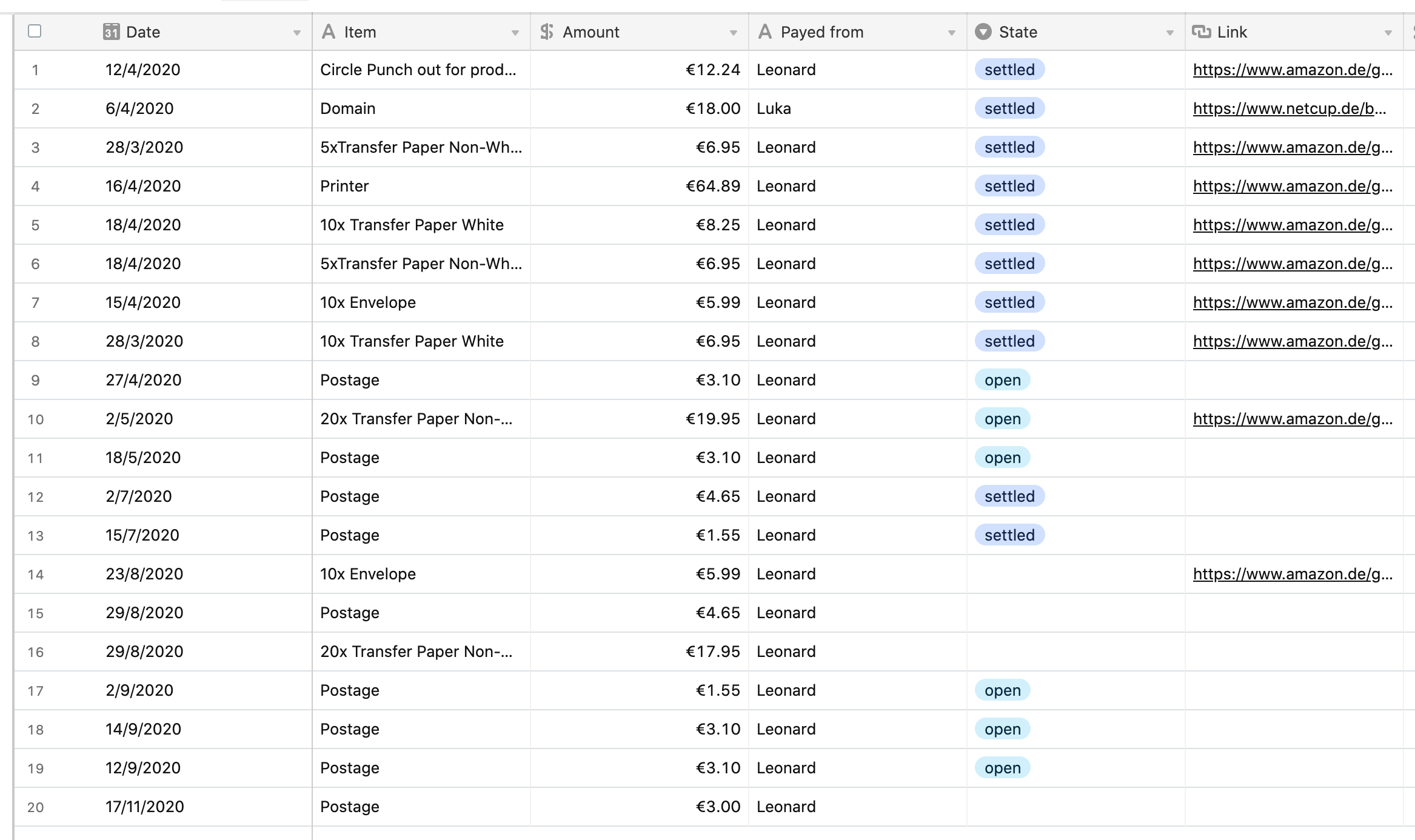What's this post about?
I want to inspire you how you can set up a professional working environment for your next idea with almost no money. To give you a concrete example: I'll talk over our set up at Active Ambassadors. All my knowledge, which I have acquired over the last years, has flown into this.
This post targets someone who has no idea what he/she is doing but also should inspire people with similar setups. Let me know if you have ideas how I can improve this setup even more (E-Mail, Twitter). 🙂
Before we start you should have this points in mind while reading this post:
- We don't want to spend money on our IT setup, our goal is to raise awareness for NGOs.
- We work 100% remotely, some of us haven't even met!
- This post isn't only there to list the tools, it's about the stuff we are really using.
- I would follow the same setup the same for a (digital) company, club or side project.
What's Active Ambassadors?
Active Ambassadors is an organization founded by Leonard Schwier and myself. The idea was to raise awareness for NGOs with the skills we have developed over the last years. For that, we'll send our active ambassadors DIY kits to iron a logo of a NGO of their choice on a jersey. To accomplish this, our team grew as Julia & Julia joined our journey ❤️
We don't make a profit. Currently we pay most of it ourselves. You can see all expenses and income on our transparency page.
Feel free to send us an email or a message on Instagram if you have any questions!
The tools we use

As I'm a big fan of structured content I split our tools into four categories: (1) Communication, (2) Operations, (3) Marketing and (4) Website. I'll shortly go over them and explain how we use them. We are using all of these tools in the free tier, we only have to pay for the domain & emails. If you are a registered NGO you even can use some premium tiers for free, e.g. on Slack or Google.
Communication
Tools: Slack, Google Meet
Our main communication tool is Slack, since we are a rather young team and grew up with messaging solutions no one had a problem to adapt it. I'm personally also a big fan of separating communications, e.g. I don't want to have discussions about Active Ambassadors mixed up with my private chats in WhatsApp.
As we use Google Calendar for invitations Google Meet was a natural fit for our calls.

As you can see we follow some simple naming conventions, to be honest they are a little overkill, but I'm used to it and I like conventions. These are inspired directly by Slack and I used them in several teams. They just work even if everybody needs some time to get used to it.
- a-announcements: Announcement channels are used to share some information with the whole workspace, e.g. about the christmas party or an all-hands.
- b-bots: These channels are primarily used by bots which only share updates, e.g. a new comment on instagram, a new order or a closed deal in a CRM.
- p-projects: These are not only for projects as they are defined, they also can be use as cross-team communication channels, e.g. for an event organization where multiple teams are needed.
- r-random: Just stuff that doesn't fit in any other channel, e.g. you can create one for a running dinner where everybody can share there meals without spamming other channels.
In other workspaces I also used t-teams and h-help but for us this isn't currently needed as we are a small team.
Operations
Tools: Airtable, IFTTT
We moved from Google Sheets to AirTable because they offer an API which can be consumed by our website to display expenses and incomes. We have two major categories with five sheets:
- CRM (definition)
- Active Ambassadors
- Organisations
- Finance
- Expenses
- Income
- Cost per DIY kit
Our list of Active Ambassadors is somehow a mixture between a CRM and an order system, if a user fills out the form a new entry will be added with all necessary information. The ambassador will also get a confirmation via Mailchimp. The new order is also communicated via Slack, this automation is done via IFTTT. That message in Slack triggers Leonard to start the printing and shipping process. Afterward, the status of the order is reflected manually in the sheet.

The organization's CRM is inspired by a standard sales funnel. In reality, it's just a Kanban board with four different states: First contact, Negotiation, Won and Lost. This helps us to keep track of organizations we already have contacted and creates transparency within the team.

I think there isn't much to say about our finance sheets, nothing fancy, pretty simple, and straight forward. This data is reflected on our transparency page.

If Notions provides us with the same functionalities to connect other tools I would like to drop AirTable to reduce the number of tools we use.
Marketing
Tools: Mailchimp, Later, UNUM
In the beginning, we had a newsletter with Mailchimp, but now all our communication efforts go into Instagram. To schedule and plan our posts Julia is using Later and UNUM and that's not something I'm familiar with, so if you want I could ask Julia for a guest contribution.
Knowledge/Tasks
Tools: Notion, Google Drive
Over the last few years, Notion has satisfied the desire of productivity junkies who want to create tools for their own needs by not writing a single line of code. It slowly spilled over into the business world, at least it looked like that to me. You can do almost everything: use it as a wiki, build a custom CRM, track your tasks, or use it as a notebook.

We decided to use it for our tasks with a simple Kanban board as well for some knowledge sharing. It's still work in progress, but it's growing.
Google Drive only exists as data grave, we only save documents (e.g. templates) or pictures, but our knowledge is completely on Notion.
Website
Tools: Nuxt.js, Netlify, Prismic, GitHub, Netcup, Figma
The next paragraphs will be very technical, if you aren't interested in this I still would recommend getting your hands on a domain, even if you aren't hosting a website. It's just ten times more professional if you send an email from luka@active-ambassadors.org instead of dungeonmaster99@gmail.com.
I built the website with Nuxt.js, a framework on top of Vue.js. So this is only something for you if you know how to do web development or if you know someone who is able to do it. The website is publicly accessible via GitHub the version control system of my choice. This is linked to Netlify where each change is directly deployed without any manual download or build process involved. During the automatic build process, the required data from Prismic our headless CMS, and AirTable are requested. Also a change to the content in Prismic would trigger a new build. I would like to have something similar for AirTable as all the numbers on our transparency page are consumed from our sheets. Because this isn't possible I trigger a new build every 24 hours via IFTTT as we don't rely on instant updates.
The domain is managed by Netcup which costs us 17.55 € per year, which also contains the email hosting.
For creating mockups, e.g. to discuss version two of our website, I used Figma as everybody can access the files in realtime and edit it or leave a comment. I also used Figma to create our logo.
Most of this could be replaced by Wordpress and a webspace. An example for such a setup can be seen on my mothers organization: Respekt Menschen (respect humans). I just prefer to have full control over the performance and the layout while going for a best of breed approach. Each part of this setup can easily be replaced, e.g. Prismic with nuxt/content or Strapi (self-hosted).
Reflection
We use a lot of SaaS as it is easy to setup and maintain, but I personally think a complete open source approach would better fit our philosophy. And for now I think that's not realistic as it would increase dramatically the maintenance effort also the costs, e.g. we would have to host servers for alternative solutions. To be honest, the maintenance is the main argument as all of this happens in my free time. If I had the time I would like to drop IFTTT and write my own bots and deploy them on our own server, the problem is just that the outcome would be the same (+ additional effort) without adding value to the NGOs we want to support.
The other question I'm not completely sure about is if all these tools are necessary? You definitely could run the same organization with phone calls and a notebook, but we like the digital life style and I'm not sure if we could drop one of the tools while staying on the same productivity level.
Key takeaways
- The free tier of many tools is completely sufficient.
- Get a fucking domain it doesn't have to cost 17.55 € a year - there are even cheaper ones, but please get a domain and use it for your emails. I'll help you for free if you need support!
- Don't implicitly trust lists of tools, decide for yourself what you and your team needs.